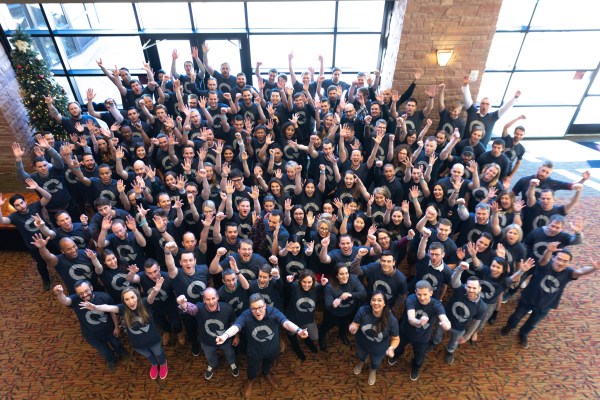Digital product design — the process of building services like websites and apps that work without bugs and as you intend them to — has come into focus as an especially important thing to get right in the last year. With more customers using sites and apps to interact with a business, if something is broken or just isn’t working that well, you can lose them much more easily than in the past in physical spaces, when store assistants might help, or the customer might simply get distracted and interested by another product.
Today, one of the startups building tools to help with digital product design is announcing a huge round of funding, a sign of the urgency and interest in the space.
Quantum Metric, which provides a cloud-based service both to build digital products and then test and fix them in real time to improve how they work, sold by the company as Continuous Digital Product Design, has picked up $200 million in funding, a Series B round that values the company at more than $1 billion. This is a significant up round for the startup, with 9.2-fold increase compared to its valuation in 2018, according to Mario Ciabarra, the founder and CEO of Quantum Metric .
This is a significant round for the company also in the context of its previous fundraising, which up to now totaled $50 million from just three named investors: Bain, Hangar 51 and Insight.
Now, the Series B is being led by Insight Partners with other backers undisclosed. Insight is shaping up to be a huge and prolific backer of companies focused on building better customer service experiences in our current, socially distanced and very digital economy: Just earlier today, the same partner that led this round for Quantum Metric, managing director Lonne Jaffe, led a $78 million round in Glia, a platform to help customer service agents do their work more easily.
Ciabarra has built his company out of Colorado, and it somewhat feels like the DNA of being “remote” from the Bay Area has fueled how the company’s own product has been developed, with the idea being that you don’t need to be on the ground and in the room with someone to be able to identify when they are unhappy. Indeed, being remote is an asset.
The company, through its customer base of enterprises, collects data interactions that cover some 1 billion internet users and some 20% of all internet activity, he said, “capturing experiences to see where people are frustrated on the web and in native apps. Our focus is on friction and frustration.”
Quantum Metric is part DevOps, and part martech. When it is used, its customers can in turn monitor when their customers are clicking too much trying to get something done, or clicking and navigating away. It logs these actions, and then suggests ways to fix them.
That focus on looking for bad online experiences seems to follow him wherever he goes: The first thing Ciabarra talked to me about when we spoke for this article was about how bad the experience was for his 12-year-old daughter “while trying to buy a bed online for her birthday” when she couldn’t immediately see a bed she wanted appear in her cart. (Yes, some 12-year-olds buy beds for themselves online, it seems. I’ll make sure my kids don’t know about this.)
“Economic downturns have a way of shining a light on high-growth ScaleUps that are particularly compelling to customers, and this year, the surging customer demand for Quantum Metric’s product from customers hit hard by the pandemic, has been extraordinary,” said Jaffe in a statement. “Quantum Metric lets enterprises use real-time qualitative and quantitative data to take the guesswork out of improving their digital features and products. We are excited to double down on our partnership with the Quantum Metric team as they bring their powerful analytics capabilities to customers across the world.”
The company today counts large internet and offline brands among its customers, with the list including Alaska Airlines, Crate and Barrel, Lenovo, Western Union, Lulu Lemon and FanDuel, and Ciabarra claims that it has held a 98% gross retention of that base, despite the aggressive competition from the likes of Log Rocket and Decibel, which actively market themselves in comparison to it. There is still a lot of opportunity, though, as the market continues to push ahead and not just shift online, but starts to look like it’s here to stay.
Before COVID, Ciabarra said, “just 10-15% of transactions were online. That’s flipped, with only 10% in person now.” And the reason it’s having traction, he added, is not just because of how customer interactions are changing, “but because company cultures are changing, too.”


Recent Comments